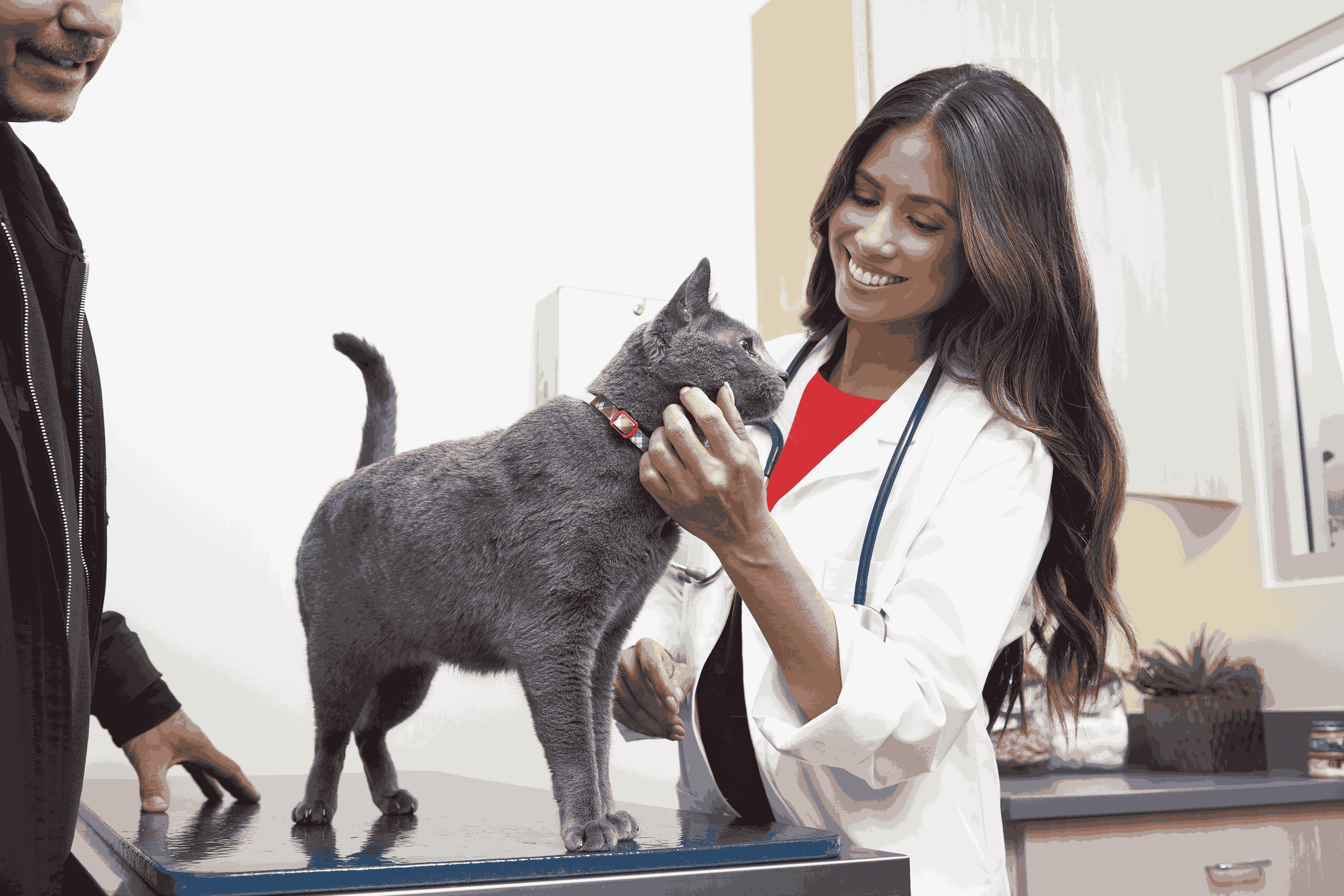Ear Polyps in Cats
Ear Polyps


SUMMARY OF CONTENT
SEVERITY:
-
Requires a diagnosis by a veterinarian
-
Resolves within days after surgery if complications or reoccurrence do not occur
-
Treatable by a veterinarian
-
No known prevention
-
Transmission is not possible between animals and not possible between animals and people, although these inflammatory polyps may be associated with chronic respiratory infections and/or feline leukemia and feline immune deficiency viruses, all of which are transmissible between cats
-
Diagnosis requires physical exam
VERY COMMON IN
Symptoms & Signs
Ear and nasopharyngeal polyps typically originate in the middle ear. They are usually benign. If the polyp grows though the ear drum into the ear canal, the cat may show signs similar to an ear infection, including scratching or shaking the head, pain on palpation of the ear, or thick or bloody discharge from the ear canal. The inner ear may also be affected, causing a head tilt, inability to walk in a straight line, or eye changes on the same side of the face as the affected ear, including Horner’s syndrome, with a droopy eyelid , and a partially prolapsed hood eyelid over in the lower part of the eye . The symptoms usually start slowly and become chronic with limited response to routine ear infection treatment. When polyps grow from the middle ear through the auditory tube into the back of the nose and mouth (the nasopharyngeal area), cats may have difficulty breathing or swallowing and may have a chronic nasal discharge and difficulty eating When these polyps are large, life -threatening breathing issues can occur, and cats may have so much difficulty swallowing that they cannot eat.
Diagnosis
Diagnosis is usually based on a thorough exam of the ear canal with an otoscope and evaluation of the oral cavity. Some cats may need to be sedated to properly examine the ear canal and nasopharynx, especially when very painful or anxious. Ear polyps are usually located in the horizontal part of the ear canal after they have grown large enough to rupture through the ear drum. Most polyps are benign inflammatory polyps, but cancerous growths may occur, and consequently biopsy and histopathology of the polyp are needed. Sometimes X-rays of the head can identify the presence of an ear polyp, but when not visible upon exam, CT scanning is usually the most effective way to look for the presence of a polyp or other ear mass. About 10% of cats have ear polyps bilaterally.
Causation
The exact cause of ear polyps is not known; however, they are usually considered o be an inflammatory reaction to to infections caused by bacteria, fungi, or viruses such as Calicivirus, or feline leukemia virusThere may be a genetic component, whereremnants of fetal brachial arches remain instead of shrinking, causing the nasal polyp structure.
Treatments
AT-HOME CARE
SUPPORTIVE CARE
MEDICATIONS
DEVICES
SURGERY
SPECIALISTS
Cost Of Treatment
Cost to remove a polyp may be in the $500 to $800 range. Recurrent polyps or larger polyps requiring a ventral bulla osteotomy may cost $2000 or more.
Recovery
Most pets show significant improvement 1-2 weeks after ventral bulla osteotomy surgery. With retraction removal of nasopharyngeal polyps, respiratory improvement is usually seen immediately. Persistent hearing loss is usually present post ventral bullar osteotomy, and may occur after retraction removal. Retraction removal does not always improve the chronic middle ear inflammation, so long term treatment with appropriate medications may be required, or eventual ventral bullar osteotomy.
Monitoring
Monitor your pet for signs of pain, disorientation, ear discharge, and breathing issues, along with a return of symptoms after surgery.
Prevention
There is no known prevention for ear polyps.
Disclaimer
The information contained on this page is for educational purposes only. Treatment should only be provided under the advice of a veterinarian who has examined your pet under the laws applicable to your state of residence.

Two Easy Ways to Start Earning Rewards!
Become a member today!Members-only pricing and offers, personalized care notifications, Vital Care points back on every purchase and more!Become a credit card member today!
Earn 2X Pals Rewards points at Petco
when you use Petco Pay!APPLY NOWLearn More About Petco Pay Benefits





